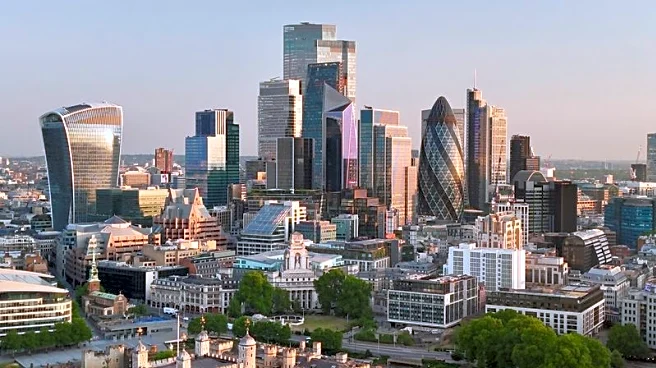What's Happening?
Hedge funds have reached a historic milestone with total global assets under management hitting $5 trillion by the end of the third quarter. This growth is attributed to a combination of positive trading
gains and increased capital allocations from investors. According to Hedge Fund Research (HFR), the industry saw an overall asset increase of $238.4 billion during the three-month period ending September 30. Notably, $33.7 billion of this was from net new allocations by investors such as pension funds, insurance companies, sovereign wealth funds, endowments, and family offices. This marks the largest quarterly net asset inflow since the third quarter of 2007, prior to the Global Financial Crisis. The growth was further supported by successful investment strategies, particularly in long/short equity, which remains a cornerstone with $1.5 trillion in assets.
Why It's Important?
The record-breaking growth in hedge fund assets signifies a robust investor confidence in the sector, driven by strategic gains in areas like mergers and acquisitions, the AI boom, and expectations of interest rate cuts. This trend highlights a shift towards risk-on sentiment among investors, who are increasingly looking to hedge funds for diversification and potential high returns. The influx of capital from institutional investors underscores the sector's perceived stability and potential for growth, which could influence broader market dynamics and investment strategies. However, the evolving risks and potential for trend reversals in equities, commodities, and currencies suggest that hedge fund managers must remain vigilant and adaptable.
What's Next?
As hedge funds continue to attract significant capital, the industry is likely to see further strategic positioning to capitalize on emerging trends and mitigate risks. Managers are expected to focus on maintaining momentum in high-performing sectors while preparing for potential market shifts. The ongoing developments in AI and technology, along with macroeconomic factors like interest rate changes, will play a crucial role in shaping future investment strategies. Stakeholders, including investors and fund managers, will need to closely monitor these trends to optimize returns and manage risks effectively.












